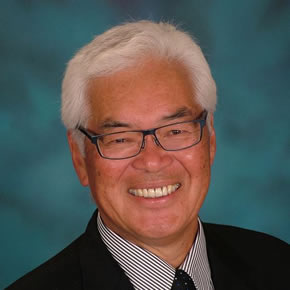FPE asks Andrew S. Imada, Ph.D.,CPE (President of A S Imada & Associates) why he became an ergonomist?
Like most professionals in my era, I came upon this ergonomics indirectly. I was trained in a traditional Industrial/Organizational Psychology program at The Ohio State University and spent a year and half in an equally rigorous program at Bowling Green State University. Wanting to return to California, I accepted a faculty position at USC where I had to teach a core course on human factors in the Human Factors Department. Having had the requisite courses in physiology, job analysis and job design, I felt comfortable teaching this new course.
When I arrived, delightful colleagues such as Mark Van Slyke, Dave Smith, Stu Parsons and Arnold Small welcomed me and eased my transition into my new academic home. A year later, I met Hal Hendrick and Ted Brown and we had the core of a strong and collegial department. One of the first things that Arnold Small did was handing me an application for HFES membership and giving me his endorsement. I have been a member ever since.
At first, I struggled with some of the engineering and physiology, but the larger systems approach helped me to find my own niche. My wife and I spent an entire year living in Japan, Hawaii and the Philippines for a teaching assignment for USC. During that time, I became familiar with the quality movement, quality circles and participatory strategies in industry. This influenced me to develop collaborations in “Participatory Ergonomics” with colleagues from Japan. At about the same time, I was working with Hal Hendrick in promoting the concept of macroergonomics and we hosted the first ODAM meeting where Kazutaka Kogi, Kageyu Noro and I first introduced participatory ergonomics in a workshop. Macroergonomics was a natural confluence between human factors and organizational psychology. I had found a home.
Beyond the content, however, I found the field and the people who did the work in it to be very attractive. What struck me was the practical impact the field had on peoples’ lives. It was impactful and the people doing it had good values, wanting to do the right thing. It was a perfect combination of psychology, physiology, biomechanics, medical and engineering sciences intended to make the world a better place. As Richard Hornick has observed, one of the reasons he stayed in this field as opposed to his original disciple is the people. Ergonomists are some of the smartest, nicest people you will meet.
After 20 years at USC, I made a career change to full time consulting. This has been most rewarding because I get to see real change that happens when human, machine and organizational systems work harmoniously as a system. The feedback you get from client organizations and people about the difference we make and how much they appreciate the unique systems perspective that ergonomics brings is priceless. Over the years, I have developed long-term relationships with clients, watched peoples’ growth and development, and made long-lasting friendships. I’m not sure this satisfaction would be possible for me in any another field.

